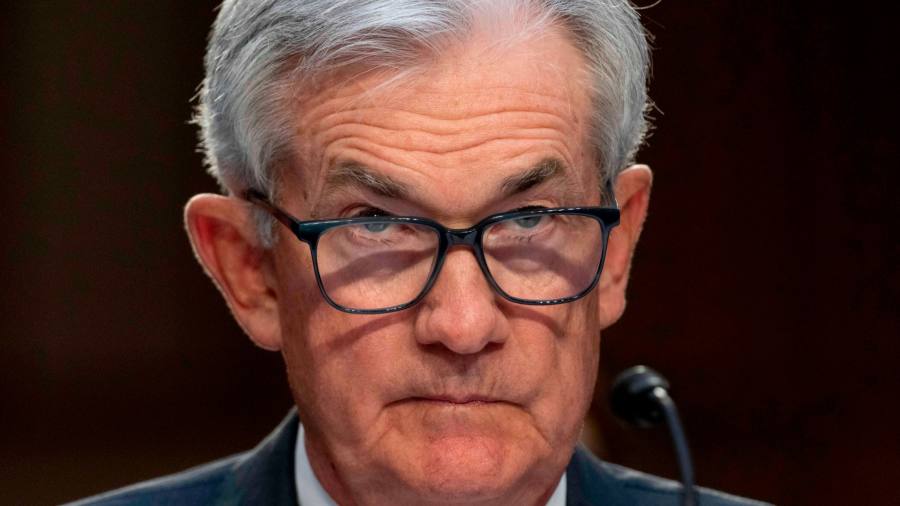The Federal Reserve on Wednesday pressed ahead with its monetary tightening campaign despite the recent turmoil in the banking sector, raising its benchmark interest rate by a quarter of a percentage point and signalling another increase to come.
Following its latest two-day meeting, the Federal Open Market Committee voted to lift the federal funds rate to a new target range of 4.75 to 5 per cent, the highest level since 2007.
In a statement on Wednesday, the FOMC said the US banking system is “sound and resilient” but that there was uncertainty about the extent to which the fallout from the banking turmoil would hit the economy.
“Recent developments are likely to result in tighter credit conditions for households and businesses and to weigh on economic activity, hiring, and inflation,” the committee said.
Following the release of the statement, US stock indices edged higher while the two-year Treasury yield dipped, indicating lower expectations of interest rates going forward. Pricing in the futures market signalled investors believe Wednesday’s increase will be the Fed’s last rate hike of this cycle.
The move comes at a time of acute uncertainty over whether the US government has done enough to avert a full-blown crisis stemming from the implosion of Silicon Valley Bank and Signature Bank earlier this month.
In a sign of how much the recent bank failures have altered the Fed’s calculus, the debate among officials just weeks ago centred around whether the US central bank should accelerate the pace of its rate rises by opting for a half-point increase.
In February the Fed had shifted down to a more traditional quarter-point cadence after implementing a string of large rises last year. But earlier this month, chair Jay Powell floated the possibility of returning to a half-point rise amid concerns the central bank has not done enough to stamp out inflation.
In its statement, the FOMC said it remained “highly attentive to inflation risks”, but signalled it is closer to wrapping up its rate-rising campaign than it was a month ago.
“The committee anticipates that some additional policy firming may be appropriate” in order to get inflation back down to the central bank’s 2 per cent target, it added.
The decision on Wednesday was accompanied by a revised set of projections for monetary policy until the end of 2025, known as the “dot plot”, as well as forecasts for growth, unemployment and inflation.
Most officials now expect the policy rate to peak at 5-5.25 per cent this year and for that level to be maintained until at least 2024. Policymakers pencilled in a series of rate cuts by the end of next year, with the federal funds rate falling back down to 4.3 per cent.
The US central bank last published officials’ estimates in December, when most expected the federal funds rate to peak at 5-5.25 per cent.
Officials’ forecasts suggest slower growth going forward as well as higher inflation. Growth is set to slow to 0.4 per cent this year before rebounding to 1.2 per cent in 2024 and 1.9 per cent in 2025. The unemployment rate is still forecast to peak at 4.6 per cent next year.
By the end of 2023, most policymakers expect the core personal consumption expenditures price index to hover around 3.6 per cent before falling to 2.6 in 2024. Both estimates are 0.1 percentage points higher than in December.
In the days leading up to the March meeting, former officials, economists and investors were at odds over how the Fed should proceed, with those in favour of a pause arguing that the central bank could further unsettle an already tenuous situation by ploughing ahead with another rate rise.
Following the collapse of SVB and Signature, the Fed rolled out an emergency lending facility to help small and medium-sized banks struggling with a flight of depositors to larger institutions. It also worked with the Treasury department and the Federal Deposit Insurance Corporation to guarantee deposits held at the two failed banks — even those above the $250,000 threshold for government insurance.
On Tuesday, Treasury secretary Janet Yellen said US authorities could take further steps to shore up the financial system if necessary.
Her comments followed an announcement on Sunday from the Fed and five other leading central banks that they would move to improve access to US dollar liquidity after the forced takeover of Credit Suisse by UBS brokered by Swiss officials last weekend.
The Fed has come under fire over the recent string of bank failures, facing questions about how closely officials were monitoring regional lenders following a roll-back in the rules governing them — measures that Powell himself endorsed in 2019.
Michael Barr, who leads supervisory matters at the Fed, said the central bank is conducting a review of how it managed SVB.
On Wednesday, Republican senator Rick Scott of Florida and progressive Democrat Elizabeth Warren of Massachusetts introduced a bipartisan bill that would replace the Fed’s internal investigator with one appointed by the president. Warren has also teamed up with other lawmakers to demand tougher regulation of the banking sector.
